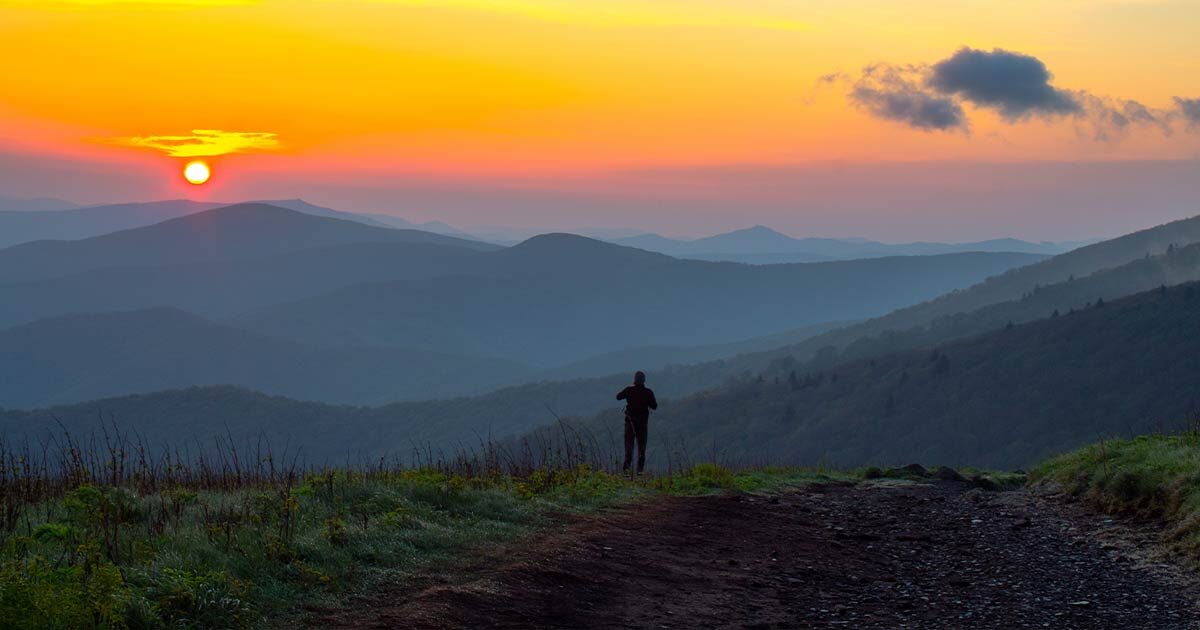
As the longest hiking-only trail in the world, the Appalachian Trail – better known as the AT — is an adventure you cannot miss. Stretching over 2,190 miles from Springer Mountain, Georgia, to Mount Katahdin, Maine, the AT winds its way through some of the most stunning scenery in the eastern United States. Backpacking The Appalachian Trail has become a dream for most hikers around the world.
While thru-hiking the AT is not for the faint-hearted, the trail offers a unique and unforgettable experience for those willing to put in the effort. The backcountry beauty includes snow-capped mountains, cascading waterfalls, mesmerizing forests, and diverse wildlife. More than just an epic journey, it’s a perfect way to become one with nature while enjoying the solitude and the personal growth that comes from achieving something truly remarkable. If you are up for a once-in-a-lifetime adventure, this guide will help you plan your trip and prepare for the Appalachian Trail hike.
History of the Appalachian Trail
Before discussing what it’s like to hike the Appalachian Trail, let’s look at the history of the trail’s development. In the 1920s, Benton MacKaye, an American forester and planner, proposed constructing a footpath spanning the Appalachian Mountains from Maine to Georgia. His vision was to create a sanctuary for city folk to once again rediscover and get closer to nature. The massive project gained significant interest and support, and in 1931, the first 14 miles of the trail were opened.
Over the years, other conservationists and hiking enthusiasts have joined the AT movement, and today, the Appalachian Trail is maintained by a mix of volunteers, private organizations, and government offices. The Appalachian Trail Conservancy (ATC), headquartered in Harpers Ferry, West Virginia, oversees the preservation and management of The AT.
To sustain The AT’s ecological integrity and ensure the enjoyment of future generations, there are rules and regulations established by park authorities that hikers must adhere to. It’s important to emphasize that the Appalachian Trail is a National Scenic Trail and should be treated with respect and care. After all, it’s one of America’s top hiking trails.
AT Trail Logistics
Hiking The Appalachian Trail is a serious task, and planning plays an essential role in a hikers ultimate success. In the following sections, we’ll look at some of the logistics of hiking The AT.
Trail access and transportation options
Accessing the trail can, at times, be a challenge, so planning out your route is important.
If you’re starting your journey from Georgia, you can fly into Atlanta or the Hartsfield-Jackson International Airport to reach the southernmost point of The AT: Springer Mountain. You can take then take a shuttle service to the trailhead from Atlanta, which is approximately two hours away. Similarly, if you plan to hike Millinocket, Maine’s northernmost section of the trail, you can fly into Bangor International Airport, which is about one hour south of Millinocket.
While not the safest option, most AT hikers wind up hitching a ride. If you don’t have the luxury of commercial transportation to reach the trailhead, you can try looking for access options online; many AT enthusiasts offer their vehicles to drop off and pick up hikers traversing The AT.
Trail maps and planning tools
The AT is an extensive hiking trail spanning over 14 states — New Hampshire, Vermont, Massachusetts, Connecticut, New York, New Jersey, Pennsylvania, Maryland, West Virginia, Virginia, Tennessee, and North Carolina — and offers a unique adventure in each one. Before starting your journey, be sure to research the section you plan to hike, check the trail conditions, and try to estimate how long your hike will take.
The Appalachian Trail Conservancy offers resupply guides, maps, and trail updates through their website. The Appalachian Trail Guide is an official guidebook distributed by the Appalachian Trail Conservancy and offers valuable information on trailheads, campsites, and trail conditions. Additionally, you can find tons of information from the trail’s hiking communities like family hiking blogs, trail websites, or YouTube channels.
Hiking Resources:
AT Resources

